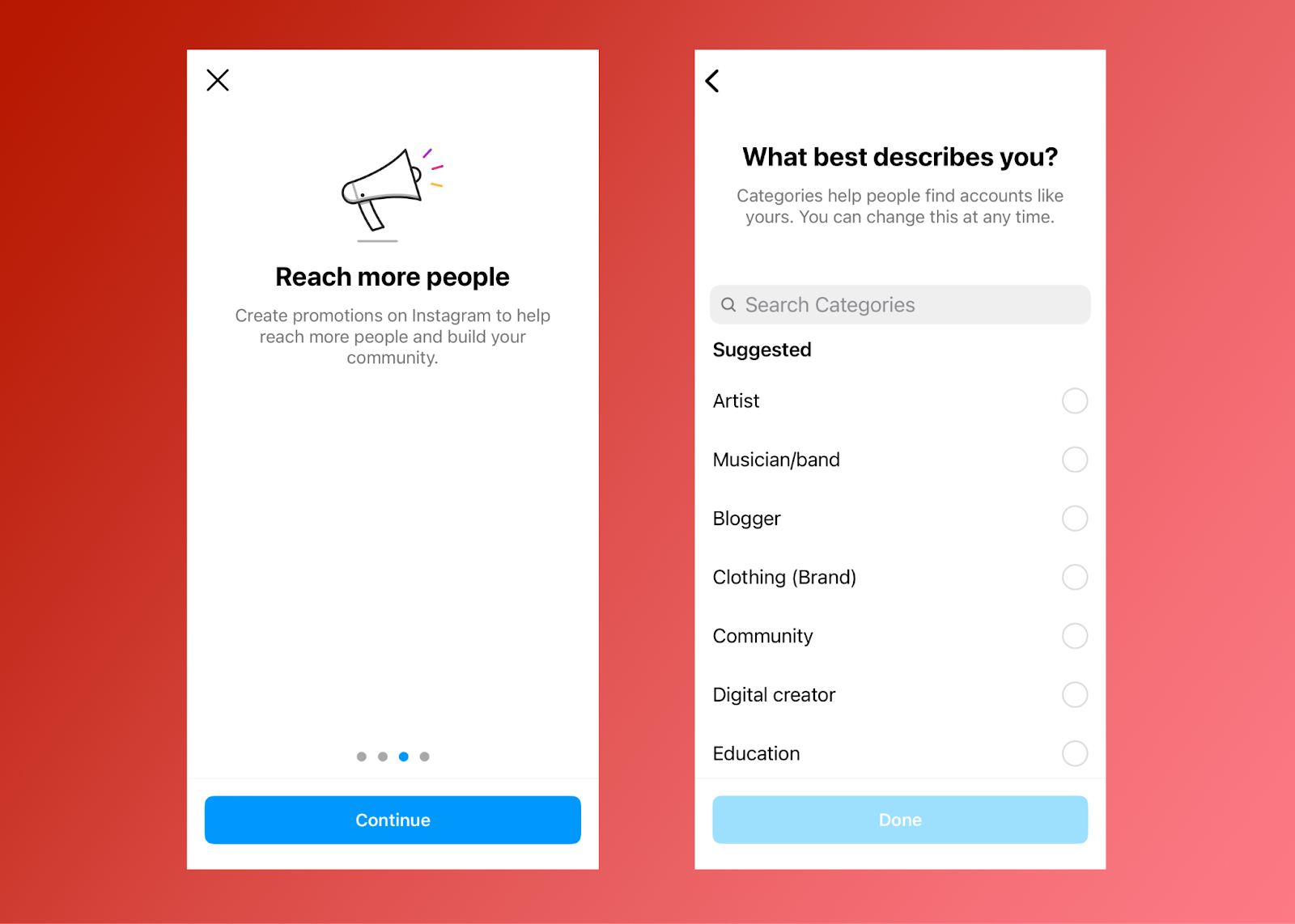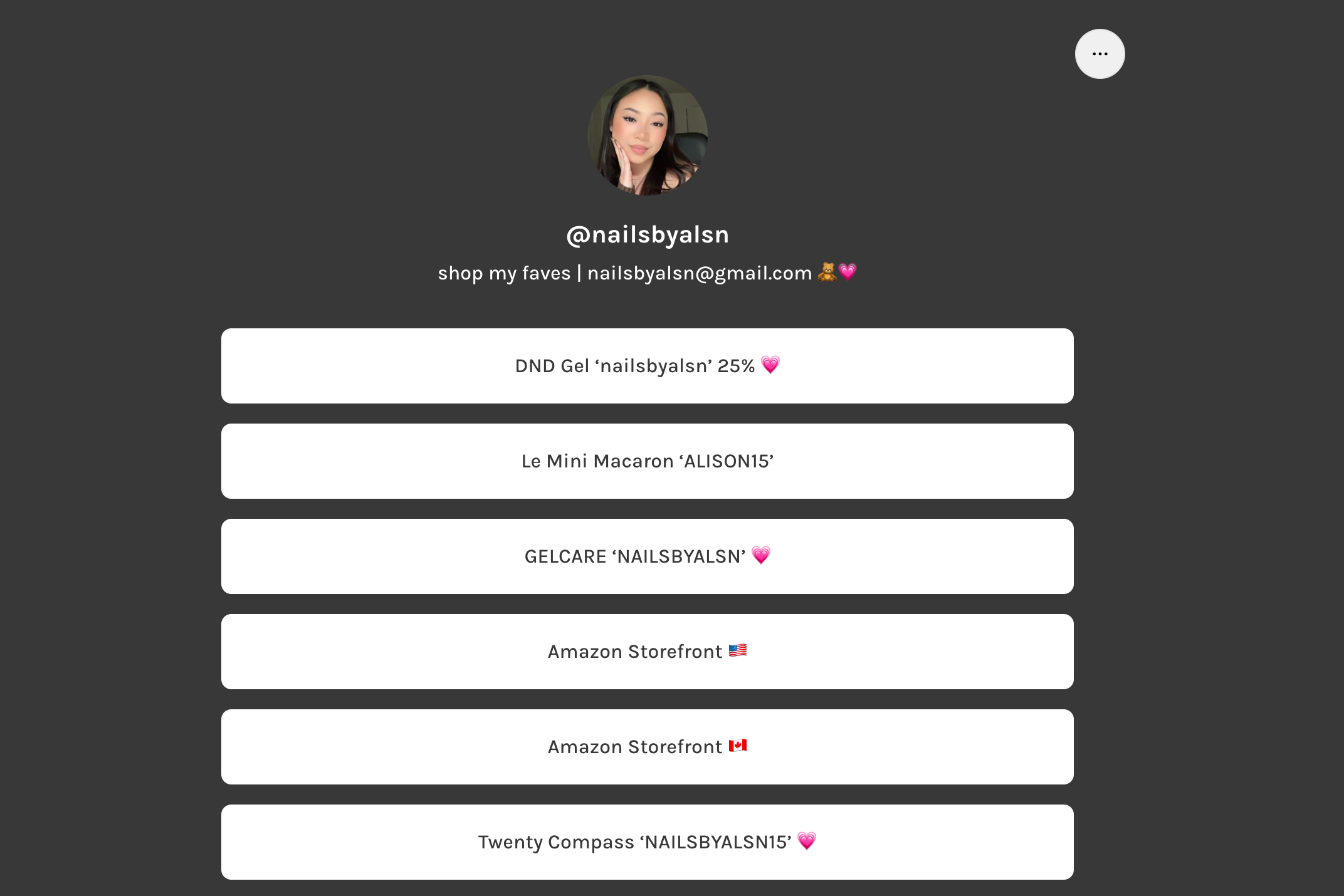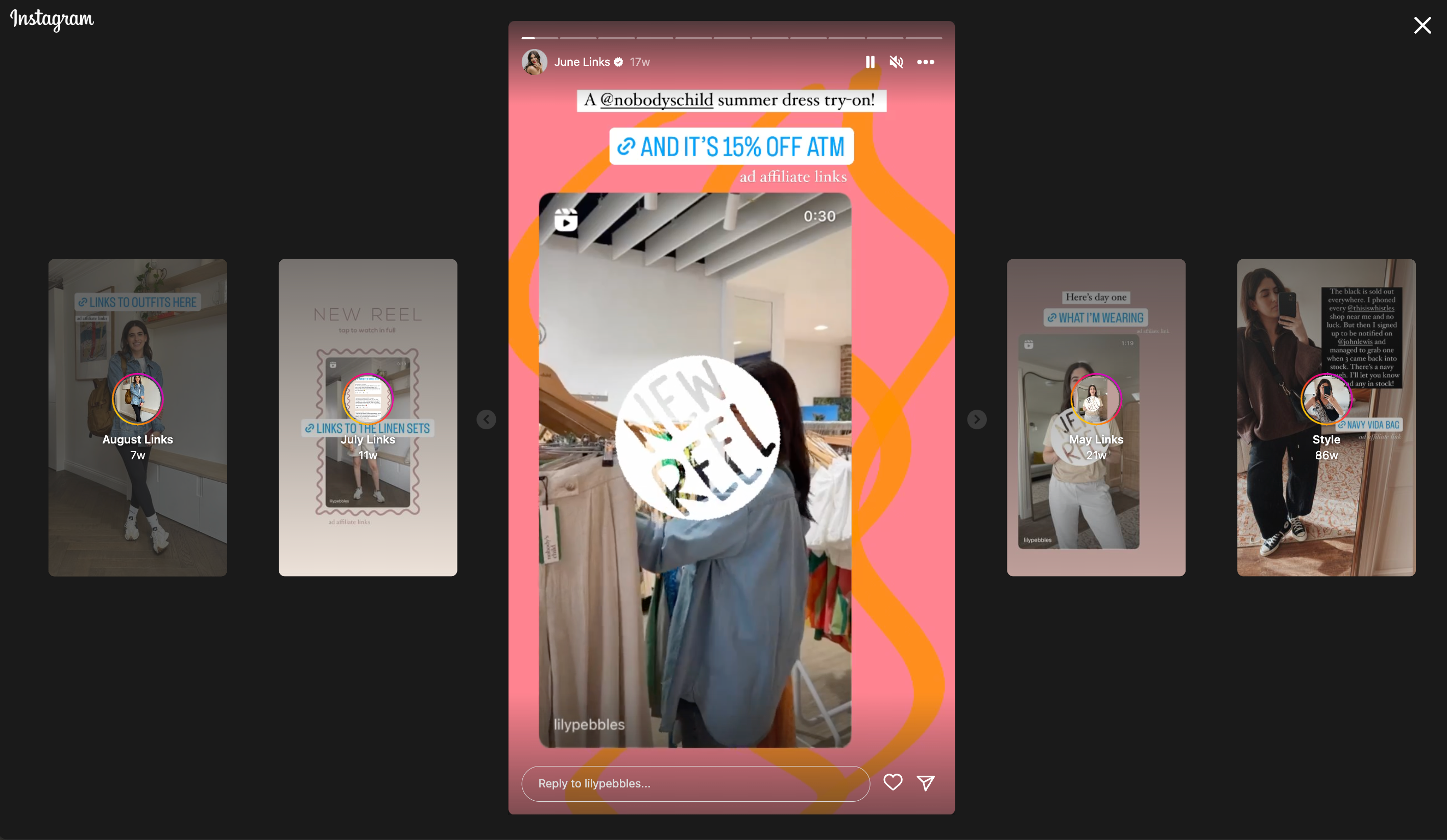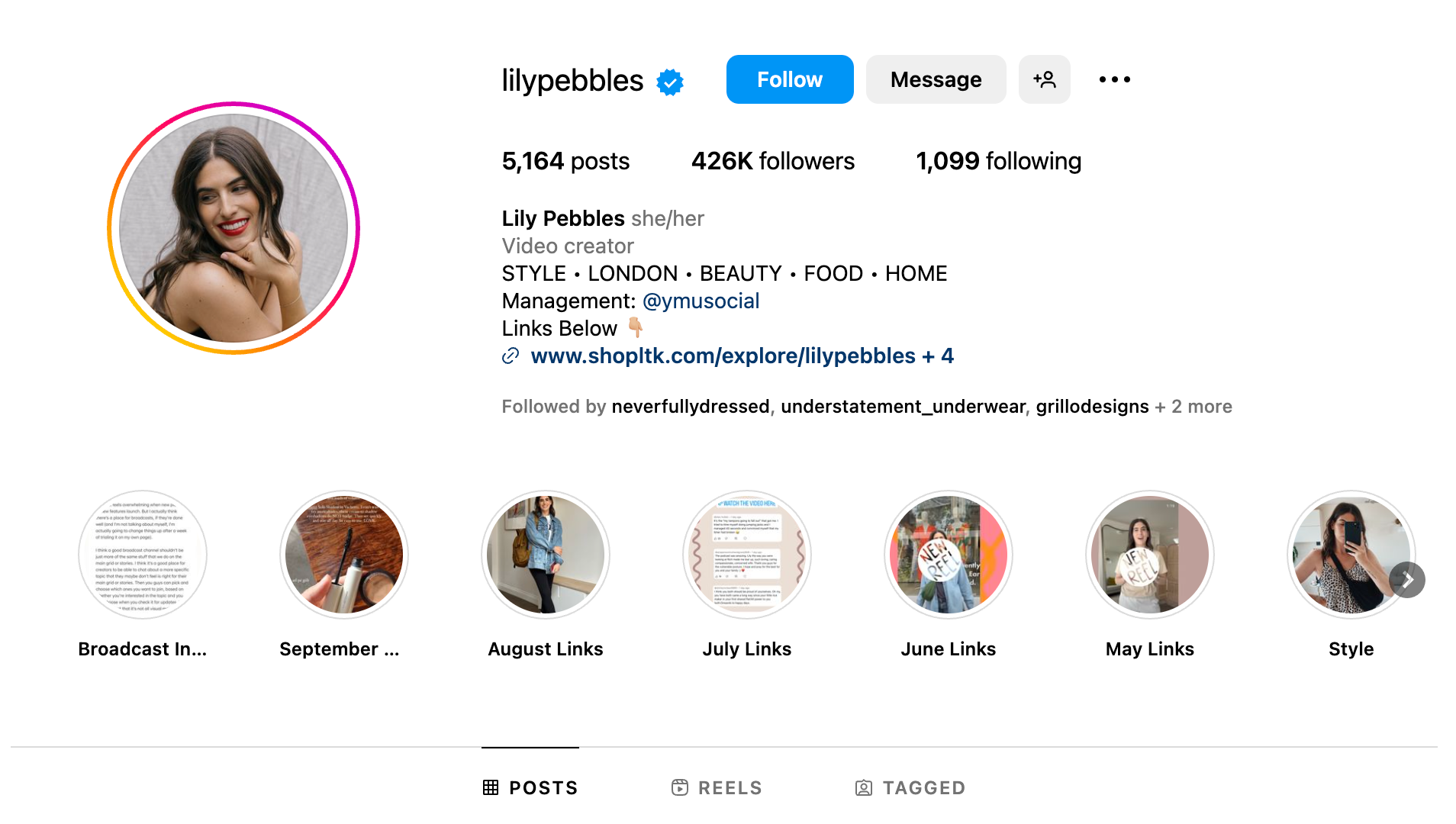Affiliate marketing and Instagram marketing are multibillion-dollar industries. Merge them together, and you have the potential for a lucrative side hustle.
Affiliate marketers on Instagram get paid when their followers purchase a product they’ve recommended on the platform.
Instagram makes an ideal platform for affiliates, not just because nearly half of users shop on the platform. Instagram’s content formats—images, videos, and livestreams—allow creators to give shoppers detailed product information.
This guide walks through how to leverage Instagram for affiliate marketing, with seven tips on how to maximize your commission.
What is Instagram affiliate marketing?
Instagram affiliate marketing is a type of marketing where affiliates recommend products and services from brands through Instagram. Affiliates get paid commission when their audience clicks (and buys) using their unique affiliate links.
There are several ways to leverage Instagram and take advantage of the benefits of affiliate marketing. Creators can include affiliate links in stories, share personal discount codes, or direct people to brand websites from their bio.
How to start affiliate marketing on Instagram
- Switch to a creator or business account
- Choose the right affiliate partners
- Build your influence
Before we tackle how to make money on Instagram with affiliate marketing, follow these three steps to prepare your account for affiliate promotion through the creator marketplace.
1. Switch to a creator or business account
To run affiliate marketing on Instagram, you need to turn your Instagram account into a professional account for a creator or business. For a creator account, follow these key steps:
1. Open your Instagram account and tap the hamburger menu.
2. Select Settings and privacy.
3. Tap Accounts type and tools.
4. If you are migrating from a personal account, choose Switch to Professional Account and tap Creator. If you are migrating from a business profile, choose Switch to Creator Account.
5. Choose the category that best describes your affiliate niche.

Instagram creator profiles are designed for bloggers, influencers, and content creators.
They give access to tools, such as advanced insights, for creators who want to monetize their audience on the platform. You can see your follower growth and audience demographics, and manage and sort multiple inboxes by type of messages and engagement.
2. Choose the right affiliate partners
Making money on Instagram with affiliate marketing means finding the brands that pay commission on the types of products you could authentically promote and sell.
There are two places to start:
- Affiliate marketing programs: Brands across niches offer opportunities for creators to promote their products in exchange for commission. Popular programs include Shopify Affiliates and Amazon Associates.
- Affiliate networks: Platforms like ShareASale, Rakuten Advertising, Awin, and CJ Affiliate aggregate affiliate opportunities and allow marketers to generate custom links, track commission, and receive payouts from one dashboard.
Reportedly, 80% of brands have affiliate programs. Many are free or inexpensive to join, though some high-ticket affiliate programs are invite-only.
Get paid by brands you love with Shopify Collabs
Shopify Collabs makes it easy to find brands that match your vibe, build affiliate relationships, get paid for what you sell, and track everything in one place.
Learn about Shopify Collabs
3. Build your influence
The size and engagement of your audience will impact the types of affiliate opportunities you can access as a creator. Instagram influencers with fewer than 10,000 followers may struggle to negotiate bespoke commission agreements with affiliate program owners.
Tips for building your Instagram influence include:
Post when your audience is active
Examine your Instagram analytics to determine the best time to post on Instagram.
Be consistent
Help people know what to expect when they first hit the Follow button. Consistently sharing new content gives followers more opportunities to engage, which is a parameter within Instagram’s algorithm.
Share non-promotional content
Keep your content credible by posting mostly non-promotional content. Marc Bromhall, founder of the affiliate website Beginner Surf Gear, says, “I adopt the one-in-20 principle, so only 5% of my posts are affiliate posts.”
Pick a niche
Your goal is to be known as a trustworthy source of information, news, or entertainment within the industry where you sell affiliate products. Being passionate about your niche helps build authenticity in the eyes of your audience.
Related article
45 Best Affiliate Programs for Marketers and Creators (2024)

Looking to make money as an affiliate marketer? Here are the commission rates, payout details, and cookie windows of the best affiliate programs.
6 tips for making more affiliate sales on Instagram
- Label affiliate products as paid partnerships
- Use your link(s) in bio
- Create a discount code Story highlight
- Record product demos
- Use hashtags to expand your reach
- Track performance and adjust
Once your Instagram affiliate account is set up, there are several strategies you can implement to strengthen your sales numbers.
1. Label affiliate products as paid partnerships
The Federal Trade Commission lays out strict guidelines on how marketers must disclose their relationship for endorsements on social media, including for affiliate marketing.
If using affiliate links, the affiliate-retailer relationship should be clearly stated so readers can assess the review or recommendation. You could say something like, “I get commissions for purchases made through links in this post.”
Instagram launched a feature designed to help affiliate marketers meet these FTC endorsement requirements: the paid partnerships label. This offers tagging opportunities to share a brand’s content, as shown in this Instagram post from Chantel Mila:
In this Instagram post created by @joycekittykat, a paid partnership tag indicates that Joyce is working with luxury accessories brand Eric Javits:
“Don’t obscure the fact that it’s affiliate marketing, since then you come off as spam,” says marketer Lattice Hudson. “Be truthful and fair with your [audience], establishing true relationships through authentic content. They won’t return if all they perceive is a commercial motive.”
2. Use your links in bio
Since you can’t add links to organic posts, take advantage of your link-in-bio space. Instagram allows you to include up to five links in your bio.
If you need more, affiliate marketers can also use a link aggregator like Linkpop to create a landing page containing your affiliate links. This creates one link hub that you can use in your Instagram bio and elsewhere.

Instagram creator @nailsbyalsn uses Linktree to group her affiliate links in one place.
3. Create a discount code Story highlight
Did you know that 40% of US consumers look for coupon codes before shopping online? Work that into your affiliate marketing strategy by sharing discount codes with Instagram followers through Instagram Stories.
The Story format is one of Instagram’s most popular. In a story, you can add affiliate links using the link sticker to drive people toward products, like this example from @lilypeppbles:

Stories last only 24 hours, but you can give them a more permanent shelf-life by creating a Story Highlight. Highlights appear underneath your bio on your profile.

Lily Pebbles/Instagram
4. Record product demos
Affiliate marketing works when Instagram followers know, like, and trust you enough to purchase the products you recommend. Help potential customers do that—without making them exit their Instagram feed in search of answers—by demonstrating how to use the product.
Accomplish this through:
- Instagram Stories. This feature allows you to post vlog-style videos.
- Instagram Reels. Use Instagram Reels for short, TikTok-style videos.
- Instagram Live. Leverage Instagram Live to streaming product tutorials.
“The best Instagram affiliate content is typically in the form of recommendations and real life product applications, not sales pitches,” says Hector Ruiz, founder of affiliate website BBQ Grill Academy.”
For example, in this Instagram video by @samiorenelda, the creator indicates she is partnering with Adobe to create a demo video for one of its products:
5. Use hashtags to expand your reach
To build an affiliate marketing business that generates passive income, you need to build a sustainable stream of new Instagram followers. More eyes on your content decreases the risk of audience fatigue—when people grow bored of seeing the same content repetitively.
Hashtags help you engage and expand your audience. Instagram users can follow hashtags inside the app—meaning your content could appear in their feed, even if they don’t follow your account.
To find Instagram hashtags, start with competitor research. Brands, bloggers, and publishers often use hashtags to expand their own reach. Look at the captions and first comment of Instagram posts shared by them for ideas.
Before adding a hashtag, double check that it’s not prohibited by Instagram’s policies and guidelines. Some hashtags like #adulting, #beautyblogger, and #pushups are associated with spam content due to frequent misuse. Using them in your affiliate content could result in your content being deprioritized.
6. Track performance and adjust
Tracking affiliate performance is an important way to assess what marketing strategies are working with your audience.
Both affiliates and brands can collect and analyze this data through affiliate marketing dashboards, which may capture key metrics such as conversion rate for promoted affiliate items, affiliate link clicks, and average order value (AOV).
Additional key performance indicators (KPIs) include:
- Profile activity. If you’re pointing followers toward a link roundup, check how many people click the link from your bio.
- Engagement rate. Evaluate this by affiliate product offering, type of content, and format. If tutorial-based Instagram Stories have a higher engagement rate than standard grid posts, prioritize them going forward.
- Followers. Knowing whether your Instagram followers are decreasing or growing, and whether growth (or decline) correlates with certain campaigns, can help determine which strategies are most effective.
Gathering this type of insight can make it easier to adjust your approach as to how to best use Instagram to drive sales.
Start your Instagram affiliate marketing journey
Instagram is constantly evolving its platform to be more creator-friendly. That’s great news for affiliate marketers using the social media network as a tool to generate extra income.
Start your Instagram affiliate marketing journey by switching to a creator account, securing affiliate partners, and building your influence. Only then can you begin promoting affiliate products in a way that encourages followers to buy.
Instagram affiliate marketing FAQ
How can I do affiliate marketing on Instagram?
Get started with Instagram affiliate marketing by switching to a creator account. Build your influence by attracting new followers, then promote products you earn commission on via Stories, Reels, and grid posts.
How do I start affiliate marketing as a beginner?
How many followers do you need to do Instagram affiliate marketing?
When sharing affiliate products on Instagram, the quality of followers is more important than the quantity. If your audience is niche and very engaged, you could begin earning passive income through Instagram with less than 1,000 followers.
How do affiliate marketers make money on Instagram?
Instagrammers monetize their profile by sharing affiliate content. When someone purchases the product through their affiliate link, a commission is earned. The percentage varies by brand.




